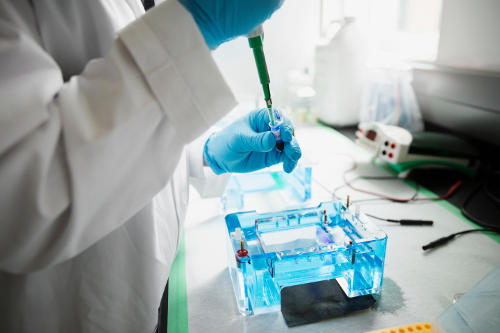Using AI to control energy for indoor agriculture
30 September 2024
Published online 17 February 2018
The deletion of a gene is identified as a major cause of a syndrome that causes neurodevelopmental disorder.

© Hero Images Inc. / Alamy Stock Photo
The genetic code is contained in our two sets of 23 chromosomes; one set inherited from each parent. When part of the genetic code on one of the paired chromosomes is deleted or copied, known as a copy-number variation, there is a major risk of neurodevelopmental and psychiatric disorders.
15q13.3 microdeletion syndrome is a copy-number variation in which ten genes are deleted from a specific location on the long arm of chromosome 15. Approximately 200 cases of this syndrome have been documented in the scientific literature. Those affected experience outcomes from a wide range of conditions, including intellectual disability (50%-60%), autism spectrum disorder (10%-20%), epilepsy (30%), and schizophrenia (10%-20%).
“This deletion syndrome has been known for decades but we do not know which of the ten genes is the most important that may be impacting it,” says geneticist, Mohammed Uddin, of Mohammed Bin Rashid University of Medicine and Health Sciences in Dubai and The Hospital for Sick Children in Toronto.
Uddin and colleagues in Canada, the US and Denmark examined the brains of mice that were genetically engineered to have a deletion similar to that in 15q13.3 microdeletion syndrome in humans. They also examined gene expression patterns in several tissues in mice and humans.
They found that the microdeletion affected the development of specific segments of nerve fibres in the brain involved in nerve impulse transmission. They also found one of the genes deleted in 15q13.3 microdeletion syndrome, called OTUD7A, played a crucial role in the branching and development of these nerve fibres. Injecting the gene into the genetically engineered embryonic mice completely stopped developmental damage in the nerve fibres.
The team also analysed gene expression data in 38,325 people with a range of neurodevelopmental disorders and found 156 people with the 15q13.3 microdeletion. In contrast, they found only one person with the15q13.3 microdeletion out of 22,241 randomly selected people.
This confirmed that the 15q13.3 microdeletion is strongly associated with neurodevelopmental disorders.
In a previous study, Uddin estimated that approximately 0.4% of all neurodevelopmental cases carry the 15q13.3 microdeletion. “If you think of the bigger picture in which approximately 3% of the general population are impacted by neurodevelopmental disorders, and out of these, 0.4% have this microdeletion, then the number is pretty big, globally speaking,” says Uddin.
“This is an elegant study that addresses an important gap in our knowledge about how copy-number variants contribute to autism and autism spectrum disorders (ASD),” says geneticist, Fowzan Alkuraya from King Faisal Specialist Hospital and Research Centre in Riyadh, Saudi Arabia, who was not involved in the study.
He adds, “we are increasingly finding that many of the previously identified pathogenic copy numbers exert their pathogenesis by disrupting individual genes. In this study, the authors combined data from large-scale copy-number analysis, and sequencing and functional analysis, to come to the conclusion that one well-established ASD-predisposition copy-number variant probably exerts its pathogenesis through the specific disruption of OTUD7A.”
According to Alkuraya, the immediate implication for patients with ASD is that scientists can now, for the first time, interpret variants in this gene to provide accurate molecular diagnosis for the few whose ASD is caused by its mutation.
Uddin and his colleagues plan to investigate the specific proteins that are regulated by the gene OTUD7A and their impacts on the development of brain nerve fibres.
doi:10.1038/nmiddleeast.2018.16
Stay connected: